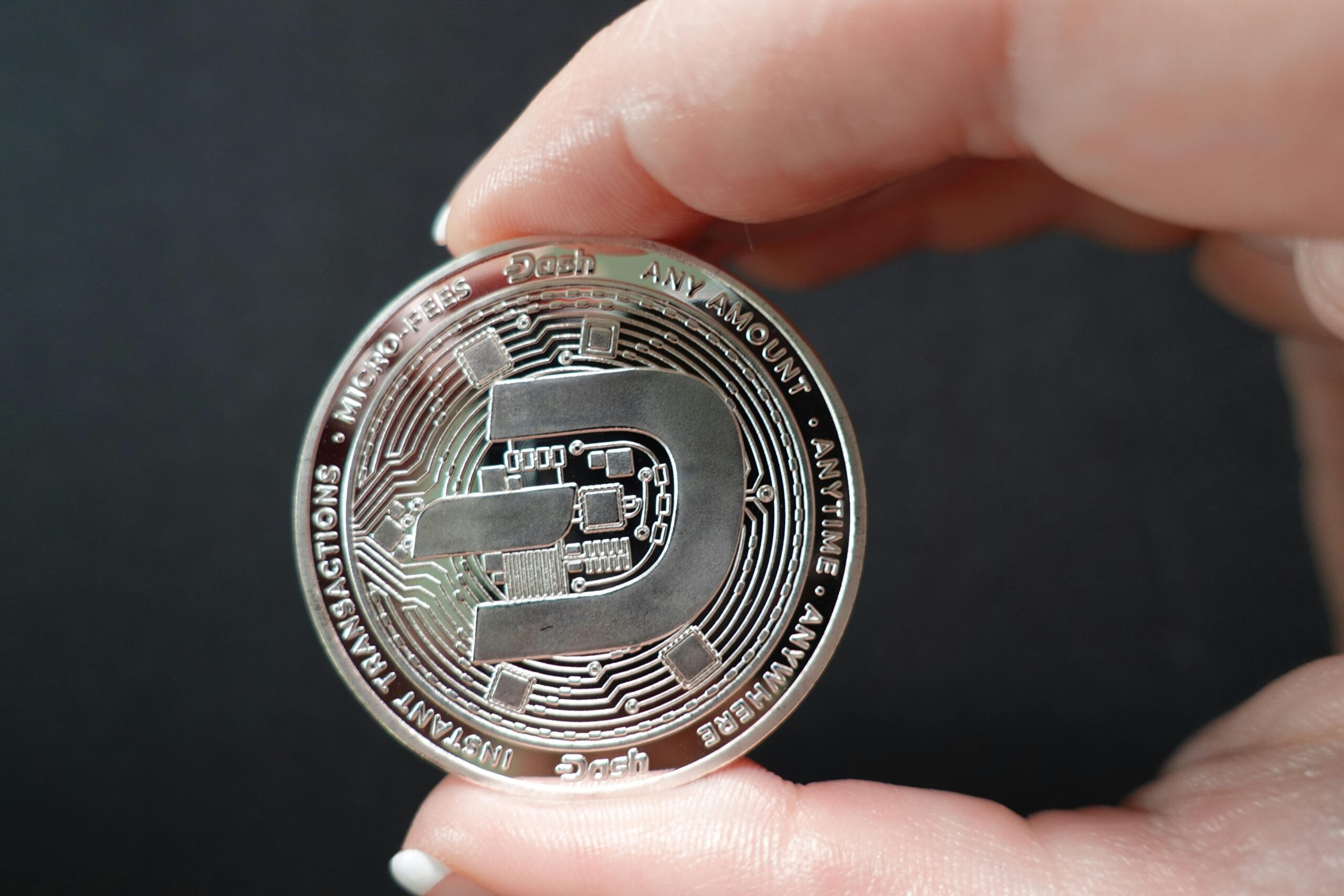Decentralized Finance (DeFi) and the Future of Retirement Accounts: Unlocking Financial Autonomy
Introduction
Picture this: You’re planning your retirement, and instead of relying on traditional financial institutions, you’re in complete control of your assets, making informed decisions with full transparency. This isn’t a fantasy; it’s the promise of Decentralized Finance (DeFi). As the financial world continues to evolve, DeFi is stepping into the spotlight, offering a revolutionary approach to retirement planning that could unlock unprecedented levels of financial autonomy.
What is Decentralized Finance (DeFi)?
DeFi, short for Decentralized Finance, is a broad term that encompasses a range of financial services built on blockchain technology. Unlike traditional finance, which relies on centralized institutions like banks and brokerages, DeFi operates without intermediaries. Instead, it uses smart contracts—self-executing contracts with the terms of the agreement directly written into code—to automate transactions and services.
Key Features of DeFi
- Transparency: All transactions are recorded on a public ledger, providing complete transparency.
- Security: The use of blockchain technology ensures that transactions are secure and immutable.
- Accessibility: Anyone with an internet connection can participate in DeFi, removing barriers to entry.
- Autonomy: Users have full control over their assets without needing approval from centralized authorities.
The Current State of Retirement Accounts
Most people are familiar with traditional retirement accounts like 401(k)s, IRAs, and pensions. These accounts are managed by financial institutions, which invest the funds on behalf of the account holders. While this system has served many retirees well, it’s not without its flaws.
Limitations of Traditional Retirement Accounts
- Lack of Control: Investors have limited say over where their money is invested.
- Centralization: These accounts are managed by institutions that act as gatekeepers.
- Economic Vulnerability: Traditional accounts are often tied to the broader economy, making them susceptible to market downturns and inflation.
Why Traditional Retirement Accounts Need a Makeover
As the financial landscape changes, the limitations of traditional retirement accounts are becoming more apparent. Here’s why they may no longer be sufficient:
Lack of Control and Flexibility
In a world where personalization is key, having limited control over your retirement funds can be frustrating. Traditional accounts are often rigid, with few options for customization.
Dependence on Centralized Institutions
Relying on banks and financial institutions means putting your trust in entities that may not always have your best interests at heart. In times of economic instability, this dependence can be a significant risk.
Exposure to Economic Downturns and Inflation
Traditional retirement accounts are vulnerable to the ups and downs of the economy. Inflation can erode the value of your savings, and market crashes can severely impact your retirement nest egg.

How DeFi is Disrupting the Financial Industry
DeFi is shaking up the financial world by introducing decentralized platforms and applications that challenge the status quo. Here’s how it’s making a difference:
Promoting Financial Inclusion and Autonomy
DeFi is democratizing finance by making it accessible to anyone, anywhere. This inclusivity is a game-changer, especially for those who have been underserved by traditional financial systems.
Case Studies of Successful DeFi Applications
Take platforms like Uniswap, Compound, and Aave, for example. These DeFi protocols allow users to trade, lend, and borrow assets without intermediaries, offering higher returns and more flexibility than traditional banks.
The Benefits of Incorporating DeFi into Retirement Accounts
So, what happens when you bring DeFi into the retirement planning mix? The possibilities are exciting:
Increased Control and Ownership Over Assets
With DeFi, you’re not just a passive participant—you’re in the driver’s seat. You decide where to invest, how much risk to take, and when to cash out.
Enhanced Transparency and Security
Blockchain technology ensures that all transactions are transparent and secure. You can track your investments in real-time and be confident that your assets are protected.
Potential for Higher Returns
DeFi opens the door to new investment opportunities, such as staking, yield farming, and lending, which can offer higher returns than traditional savings accounts or bonds.
Risks and Challenges of DeFi in Retirement Planning
Of course, with great power comes great responsibility. While DeFi offers numerous benefits, it’s not without its risks:
Volatility and Market Risks
Cryptocurrencies and DeFi assets are known for their volatility. Prices can swing dramatically, which can be both a blessing and a curse for investors.
Regulatory Concerns
The regulatory environment for DeFi is still evolving. There’s uncertainty about how governments will treat DeFi in the future, which could impact its growth and stability.
Security Risks
While blockchain is secure, DeFi platforms can be vulnerable to hacks and exploits. Smart contract bugs and phishing attacks are common threats in the DeFi space.
How to Start Integrating DeFi into Your Retirement Strategy
Ready to dip your toes into DeFi? Here’s how to get started:
Understanding the Basics
First, you’ll need a digital wallet to store your assets. Platforms like MetaMask or Trust Wallet are popular choices. You’ll also need to familiarize yourself with decentralized exchanges (DEXs) like Uniswap or Sushiswap.
Exploring DeFi Investment Options
There are various ways to invest in DeFi. Staking allows you to earn rewards by locking up your assets, while yield farming involves providing liquidity to earn interest. Lending platforms like Aave let you lend your assets to others in exchange for interest.
Tips for Beginners
Start small and diversify your investments. DeFi can be complex, so it’s wise to take your time, do your research, and never invest more than you can afford to lose.
Real-Life Examples of DeFi Retirement Accounts
Let’s look at some individuals who are already reaping the benefits of DeFi in their retirement planning:
Case Studies
John, a tech-savvy retiree, has allocated a portion of his retirement savings to DeFi staking, earning a steady passive income. Meanwhile, Sarah, a financial analyst, uses DeFi lending platforms to diversify her portfolio and hedge against inflation.
Overview of DeFi Platforms for Retirement
Platforms like Rocket Dollar and Dharma are paving the way for DeFi retirement accounts, offering tools and services that make it easier to integrate DeFi into your retirement strategy.
Comparing DeFi Retirement Accounts to Traditional Accounts
How does DeFi stack up against traditional retirement accounts? Here’s a comparison:
Flexibility and Control
DeFi offers unparalleled flexibility, allowing you to customize your retirement plan to fit your needs. In contrast, traditional accounts often come with rigid rules and limited options.

Risk and Reward Profiles
While DeFi can offer higher returns, it also comes with higher risks. Traditional accounts are generally safer but may not provide the same growth potential.
Long-Term Viability
The long-term success of DeFi in retirement planning depends on the continued growth and acceptance of decentralized technologies. Traditional accounts, while less exciting, have a proven track record of stability.
The Future of Retirement Accounts: A DeFi Perspective
What does the future hold for retirement accounts in the age of DeFi? Here are some predictions:
Adoption of DeFi in Retirement Planning
As more people become aware of DeFi’s benefits, we can expect to see a gradual shift towards decentralized retirement accounts. This trend could accelerate as the technology matures and becomes more user-friendly.
Impact on Traditional Financial Institutions
Traditional financial institutions may need to adapt or risk becoming obsolete. We may see a hybrid model emerge, where traditional and decentralized finance coexist.
The Evolving Global Retirement Landscape
DeFi has the potential to revolutionize retirement systems worldwide, particularly in countries with unstable economies or limited access to traditional financial services.
Regulatory Landscape and Legal Considerations
Navigating the regulatory landscape is one of the biggest challenges for DeFi. Here’s what you need to know:
Current Regulations
Regulations vary by country, with some governments embracing DeFi and others imposing strict controls. It’s crucial to stay informed about the laws in your jurisdiction.
Potential Future Developments
As DeFi grows, we can expect more regulatory scrutiny. This could lead to new laws and regulations aimed at protecting consumers and maintaining financial stability.
Staying Compliant
To ensure compliance, consider working with a financial advisor who understands both traditional and decentralized finance. They can help you navigate the complexities of DeFi and retirement planning.
Steps to Safeguard Your DeFi Retirement Investments
Protecting your investments is key to a successful retirement strategy. Here are some tips:
Best Practices for Security
Use hardware wallets for long-term storage, enable two-factor authentication (2FA), and stay vigilant against phishing attacks.
Importance of Diversification
Don’t put all your eggs in one basket. Diversify your investments across different DeFi platforms and assets to spread risk.
Staying Informed
The DeFi space is constantly evolving, so it’s essential to stay up-to-date with the latest developments and trends. Follow reputable news sources and join DeFi communities to stay informed.
The Role of Education in DeFi and Retirement Planning
Education is crucial for navigating the DeFi landscape. Here’s why:
The Need for Financial Literacy
DeFi can be complex, and understanding it requires a solid foundation in financial literacy. Take the time to learn about blockchain, smart contracts, and decentralized finance before diving in.
Resources and Tools
There are plenty of resources available to help you get started, from online courses to podcasts and webinars. Platforms like Coursera and Udemy offer courses on DeFi and blockchain technology.
Community Support
The DeFi community is a valuable resource. Engage with other users on forums like Reddit or Discord, and don’t hesitate to ask questions or seek advice.

Conclusion
For More Information Check This
Decentralized Finance is more than just a buzzword—it’s a powerful tool that could transform the way we plan for retirement. By embracing DeFi, you can unlock new levels of financial autonomy, take control of your retirement planning, and potentially achieve greater financial security in your golden years. While there are risks involved, the potential rewards make it worth exploring. As with any investment, it’s essential to do your homework, stay informed, and approach with caution. The future of retirement is decentralized, and it’s time to start planning for it today.
FAQs
- What is the main difference between DeFi and traditional finance?
- DeFi operates without intermediaries, offering greater transparency, control, and accessibility compared to traditional finance, which relies on centralized institutions.
- Can DeFi completely replace traditional retirement accounts?
- While DeFi offers exciting opportunities, it’s unlikely to completely replace traditional accounts in the near future. However, it could become a valuable complement to traditional retirement strategies.
- What are the risks of using DeFi for retirement planning?
- Risks include market volatility, regulatory uncertainty, and security vulnerabilities. It’s important to understand these risks before investing in DeFi.
- How can I start using DeFi for my retirement strategy?
- Begin by educating yourself on the basics of DeFi, setting up a digital wallet, and exploring different investment options like staking, lending, and yield farming.
- Will DeFi be regulated in the future?
- As DeFi grows, it’s likely to face increased regulatory scrutiny. Future regulations could impact how DeFi operates and how it can be used for retirement planning.



Your blog is a treasure trove of valuable insights and thought-provoking commentary. Your dedication to your craft is evident in every word you write. Keep up the fantastic work!
I like this post, enjoyed this one thank you for posting. “Abortion is advocated only by persons who have themselves been born.” by Ronald Reagan.